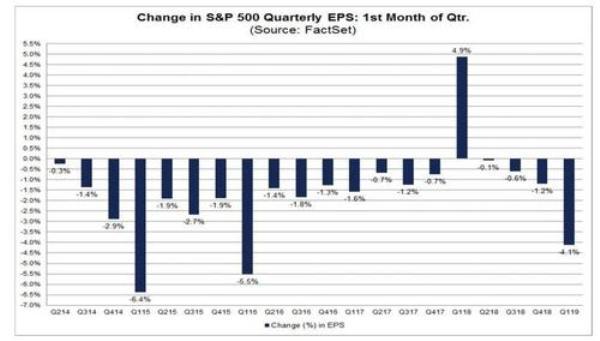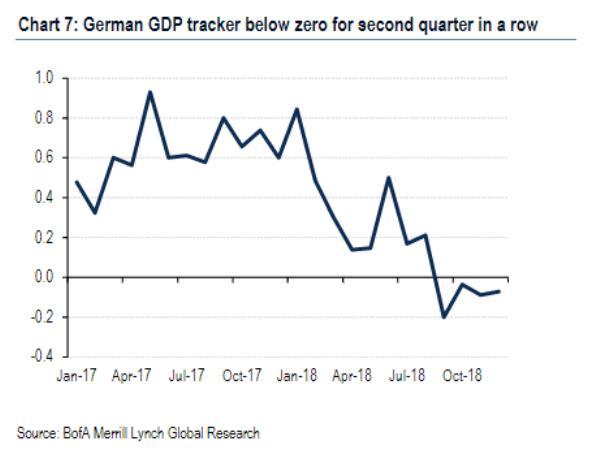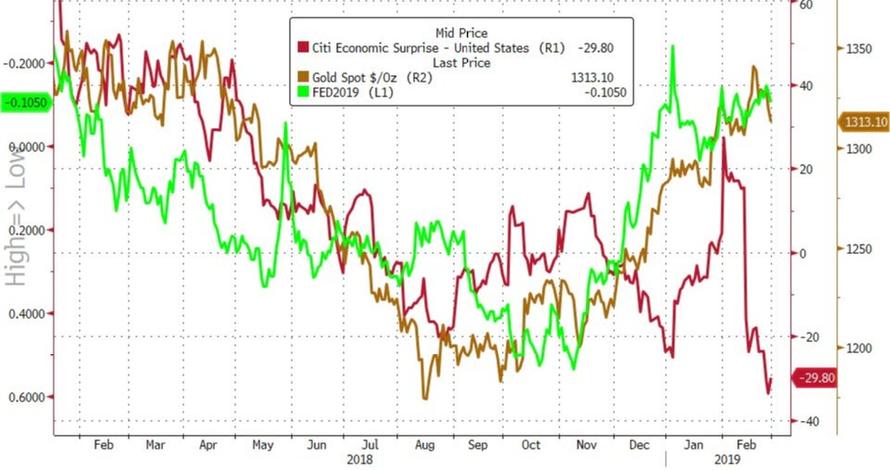Authored by John Rubino via DollarCollapse.com,
When the financial markets got, um, choppy towards the end of 2018, the Fed caved almost instantly. But only rhetorically.
Fed chair Powell promised to stop raising interest rates and shrinking the money supply, and the financial markets, trained to salivate at the sound of Fed happy talk, immediately morphed from “risk-off” to “risk-on.” Stocks are now approaching last year’s all-time highs, bond prices are way up (which is to say long-term interest rates are way down) and the financial press is back to celebrating the “Goldilocks economy.”
But remember that as far as actual monetary policy goes, nothing has changed. Last year’s Fed Funds rate increases are still in place, while the Fed’s balance sheet remains diminished (which is to say the cash drained from the economy as the bonds in the Fed’s account were retired remains out of action). So the damage has not been undone, and it’s starting to bite. Some examples:
US retail sales are falling:
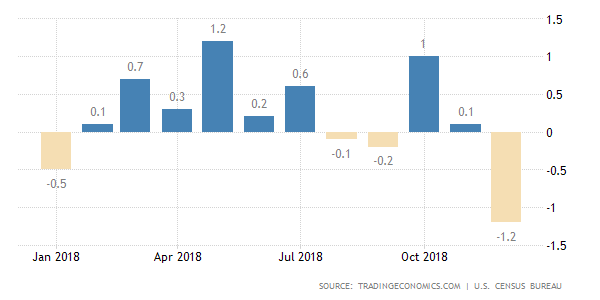
source: tradingeconomics.com
Housing, which a year ago was in a mini-bubble, is rolling over. Housing starts are down…
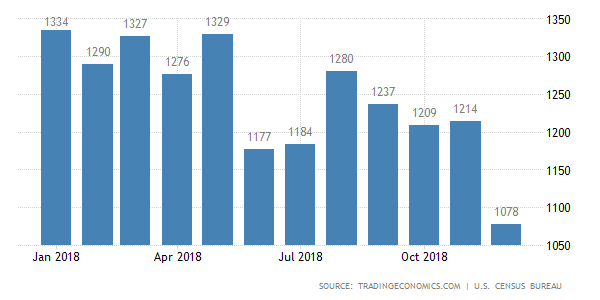
source: tradingeconomics.com
… while existing home sales have cratered:
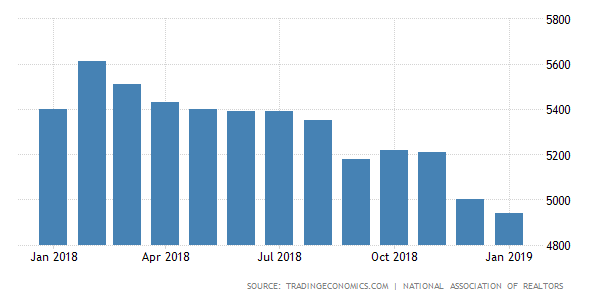
source: tradingeconomics.com
US manufacturing orders missed big in the most recent reporting month:
Corporate earnings, meanwhile, are so weak that analysts are talking about an “earnings recession”:
From a February Zero Hedge article:
One week ago, when looking at the dramatic collapse in consensus Q1 EPS estimates, we noted that the “profit party” is over and the days of near record earnings growth are about to end with a bang as a result of the recent barrage in profit warnings and negative preannouncements, first and foremost starting with Apple, which issued a shocking guidance cut one month ago for the first time since 2001. As a result, analysts have slashed their S&P500 earnings estimates for the first quarter, and the Q1 bottom-up EPS estimate dropped by 4.1% (to $38.55 from $40.21) during this period.
All eleven sectors recorded a decline in their bottom-up EPS estimate during the first month of the quarter, led by Energy (-22.5%) and Information Technology (-7.3%). Overall, seven sectors recorded a larger decrease in their bottom-up EPS estimate relative to their 5-year average and their 10-year average for the first month of a quarter.
And the slowdown is global. Here’s German GDP growth:
In February MarketWatch asked:
Is Germany already in a ‘technical’ recession? These economists think so
Investors are worried that a global slowdown led by China could begin to sap U.S. growth, but it’s Europe that’s looking a little sickly at the moment.
Expectations that Germany, Europe’s largest economy, could post a second consecutive quarter of falling gross domestic product were on the rise after a dismal reading on November industrial production last week, which showed a 1.9% fall, defying a forecast for a 0.3% rise.
“Industrial production data was a proper disappointment this month. Our German GDP tracker has deteriorated to minus 0.1% [quarter-on-quarter]. This would be the second consecutive [quarter-on-quarter] GDP contraction, meaning Germany could now be in a technical recession,” wrote economists Evelyn Herrmann and Gilles Moec at Bank of American Merrill Lynch, in a Monday note (see chart below).
Germany’s slowdown is attributable in part to slowing activity in China, the economists said. And concerns about China are certainly on the rise thanks to homegrown headwinds and the continued trade battle with the U.S.
What does all this mean? Mainly that despite the recent bounce in US financial asset prices, the Fed didn’t succeed in stabilizing the real economy. With the major countries pretty much all slowing down, corporate profits will likely fall this year. Falling corporate profits tend not so support record-high share prices. And the longer the slowdown continues the bigger the risk that stock investors will catch on and panic, taking us back to the flash bear market of late 2018.
Then it gets interesting. Realizing that words have failed, the Fed will be forced to stop promising and start delivering. So the second act of this play will be not just a pause but a reversal of last year’s tightening.
But this won’t work either. A modest reduction in interest rate cuts and slight increase in asset purchases will buy, at most, another two-month pop in share prices, followed by another realization that the economy is still weakening, followed by yet another, probably much bigger stock market plunge.
Eventually, we’ll settle into a permanent state of ever-increasing QE, zero-to-negative interest rates and every imaginable kind of fiscal stimulus.
A simple way to gauge our place on this path is the price of gold. When Act Two (gradually falling interest rates, modest QE) is implemented, gold should bounce back up to around $2,000/oz. Once Act Three (massive, permanent QE, NIRP, bailouts for bankrupt states and cities) is in full swing, gold should pass $5,000 on its way to infinity.
via ZeroHedge News https://ift.tt/2GWKeUL Tyler Durden

